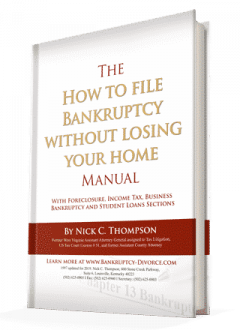Many of our bankruptcy clients obtain a 725 or higher FICO Credit Score within a year after Bankruptcy when they follow these guidelines. Regulations require you to wait two years after the bankruptcy discharge to get a VA, FHA, or HUD mortgage and three years after a foreclosure. Interestingly, the foreclosure actually has more than twice the effect of a Chapter 7 bankruptcy in damaging your credit and getting a mortgage later. In fact, the foreclosure takes over 4–5 years before it stops damaging your credit. But, if you file Chapter 7, you can have another home in about two years and four months.
How to Get a 725 FICO Credit Score after Bankruptcy
Changing your budgeting skills and habits allows you to become and stay financially successful. Most people can buy a car within 6–12 months after discharge. So, you can buy a used car during Chapters 7 or 13, but the rates will be slightly higher.
Auto loan interest rates for those with credit scores of 600 or less ranged from 12% to almost 21% higher in the fourth quarter of 2018, according to Experian’s State of the Automotive Finance Market report.
A Bankruptcy case closes after about four months in Chapter 7 and three or five years in Chapter 13. As soon as the case closes, you can start to repair your credit. If you work on just six areas that control your credit score, your FICO credit score will improve within months after the discharge. However, accounts must report as closed after discharge—not as delinquent.
⎆ How Do FICO and Bankruptcy Work?
Bill Fair and Issac are the engineers and mathematicians who created FICO credit scores which range from about 300–850. The three credit bureaus all use FICO, but creditors may report to any combination of the three reporting agencies Equifax, Experian, and Transwestern. That explains why scores vary from one service to another.
But, if you reaffirm after bankruptcy, the payments are then reported. If you need to refinance your mortgage later, it is important to reaffirm.
Reaffirmation is a step that many people in debt take as part of a bankruptcy action. In simple terms, reaffirming a particular debt means the individual has agreed to continue paying the debt rather than include it in the petition filed with the U.S. Bankruptcy Court.
It’s important for you to realize that lenders have their self-interests in mind when they lend to you. The worse the lender, the more the lender wants your score to remain low, so you don’t go to competitors for better rates.
For instance, “Buy Here Pay Here” car lots do not report on-time payments to credit bureaus to keep customers coming back. Some credit card companies also work to keep your credit scores low, so you can not leave them. Of course, if customers improve their credit score, they obtain lower rates and abandon subprime credit cards, mortgages, and car lots.
Therefore, be wary of the smiling face you are talking to at a car lot or mortgage brokerage firm. Mortgage brokers and car finance managers are paid more by selling the high rate of subprime loans. Customers are often lied to by loan officers who could have gotten them a better personal loan because they can make higher commissions from the bad loans. However, with a 725+ score on the credit report, you leave this behind for lenders who want your business.
⎆ Five Major Factors to Improve Your FICO and Qualify You for a Mortgage
1. Inquiries for Credit
Don’t act desperate for credit and allow inquiries. Understand that inquiries damage your credit report. Inquiries account for 10% of your score.
2. Several Different Types of Credit
You want different types of credit to show you pay regardless of what kind of loan you have. Obtain 2–3 revolving (credit card or department store) credit accounts and one instalment account, such as a car loan, and pay on time. This is 10% of your credit scores. Keep the amount or percentage of the credit you use low.
3. On-time Payment History
Paying regularly and on time accounts for another 35% of your score. One late payment or mistake will not kill your FICO score, but it may deny you a mortgage. Not paying on multiple accounts recently kills your credit and may drop it 100 or more points.
Interestingly, old history only has a minor effect on your credit scores. As a bankruptcy or judgment gets older, it has a little effect within 1–3 years. But multiple credit accounts that are recently unpaid have a major impact on your score. To help establish a history of on-time payments, try making automated payments with your accounts.
4. Account Age History
How old your accounts are is another important factor. The depth (age) of your credit history accounts for about another 15% of your FICO score. Don’t skip from one lender to another unless you have to. For example, credit history of on-time payments with Chase for 15 years has more impact on your score than being with Capitol One for the last six months.
5. Keep Credit Balances Low
You want high limits on the cards, but you don’t want your credit accounts charged up to the limits. This is why it is important to have your credit limit and target your balances below 30%. Having low balances on your accounts’ credit history and not over-using accounts is 30% of your score. Keeping a small balance also won’t cost you much in interest or fees.
⎆ Tactics that Help You Get a Mortgage
Your credit score, ability to repay (income), cash in the bank (savings and liquidity), healthy credit history, and how large a down payment you have all contribute towards a successful mortgage or personal loan applications. To qualify after a bankruptcy, we suggest the following actions on your part:
- Open up a savings account and put money in it for your down payment over time after you have filed bankruptcy.
- Mortgagors won’t lend to you with less than a 620–630. But, they will fight for your business at 725+.
- You need a history of on-time rental payments to use your checking account to prove on-time rent payments.
- Use a mortgage banker for lower rates, not a mortgage broker who deals with higher rates and riskier mortgages.
⎆ Six Steps to a 725+ Credit Score after Bankruptcy and Qualifying for a Mortgage
1. Use Only 30% of Your Credit Limit at Any One Time
Charging your card’s credit limit is death to your score. Instead, only charge about 30% of your credit limit on any card if you are trying to qualify for a mortgage.
- If you can’t pay your balances off within 1–2 years, consider filing bankruptcy. Yes, bankruptcy drops your score by 50 points or so. But, studies show if you can’t pay off your debt within a year, you are better off filing bankruptcy and getting a fresh start. Using bankruptcy when necessary is a financial tool to increase your wealth.
- Paying your debt on time after filing bankruptcy puts you on a path to a 725 or better score. Being in debt for 10 years and paying cards late will ensure you never own a home. Banks will consider your mortgage application two years after a bankruptcy discharge. But, they won’t touch an application with late payments on credit history.
- It doesn’t help your score when you average the cards with one at max and two cards with a zero balance. Rather, all of them should be below 30%. That’s in addition to making a few monthly charges. One way is to use your cards to pay the utilities and then pay the cards off each month to eventually have a good credit score.
- Another tactic is to become an authorized user on someone’s account if you can’t get a credit card from a bank. You don’t have to make charges on mom’s account, but if her score is high, being on her account as an authorized user increases your score. This tactic will normally allow you to more easily open credit accounts a couple of months later.
2. To Achieve Credit Variety, Start a Revolving Line of Credit and One Installment Loan with Depth
- Prefer using old accounts, if you have any. Not using accounts means they become inactive after 120-180 days, and you start over. Also, don’t close accounts. You need a long-term credit history of business with lenders. Having additional accounts does not improve your score and increases the risk you might go into default.
- Don’t constantly apply for credit. The fewer accounts you have, the fewer the inquiries. So, don’t fill out an application to get a special deal at Macy’s. It costs you more than the gifts they give out. Fewer inquires mean higher and good credit score, while too many inquiries show that you are desperate for credit.
- Pay your utilities with your credit card, and then pay the credit card with automated payments from checking. You won’t forget to pay with a credit card if the payments are automated. You can average your utility bills while increasing your score. If there are no annual or monthly fees and you don’t otherwise use the card, you will increase your credit scores.
3. Regularly Verify Your Credit Reports and Credit Limits
Some lenders work to lower your score to keep customers. They won’t report on-time payments and make it a point to report every late payment. Such lenders include finance companies and “Buy Here Pay Here” car lots. Therefore, it’s highly important to check how the lenders report your credit.
- Some credit cards do not report the true limits and instead report your balance as the credit limit or highest balance. In that case, it shows if you are charging 100% of your limit. They also may not report your on-time payments or may not report at all. However, if a lender does not report your credit limits and on-time payments, then take the initiative to close the account.
- “Buy Here Pay Here” car lots also intentionally lower your scores to keep you as a customer and refuse to report on-time payments to keep you captive. Instead, you want bank instalment credit for your car loans. Interestingly, credit unions and finance companies are given less impact than bank loans. But, you can only catch these errors by examining your credit report regularly.
- After bankruptcy, your report accounts should show an account is closed rather than delinquency. This is sometimes difficult for an individual to resolve with the reporting agencies. However, we have a service we recommend for correcting this.
4. Check the Accuracy of Your Credit File and Remove Errors
85% of credit reports have errors, and 40% have serious enough errors that prevent you from getting a home mortgage. The good news is that checking your file does not affect your score. So, we recommend that you check it at least 2–3 times per year.
- Most credit improvement services only have a 35% success ratio and only suppress a credit item temporarily. There is a huge difference between temporarily suppressing an item and permanently deleting it. Even the best companies only have a 70% success rate.
- Only negative information, recently missed payments, duplicate collections for the same debt, and accounts that are not yours are a high priority. Concentrate on recent activity (less than 2-year-old errors). Bankruptcy items reported as delinquent instead of an account closed are errors. Information that is not yours is often identity fraud. Incorrect addresses may mean utility bills being charged in your name, which can highly impact credit scores.
- If you go through a divorce, do not expect your spouse to pay joint debts. Joint debts will affect your good credit score regardless of your divorce court order requiring your ex-spouse to pay it. If you go through a divorce, it may be better to file bankruptcy rather than struggle with unpaid debts your ex-spouse promises to pay. Also, never co-sign a debt. But if you do cosign a debt, checking your credit file will alert you to any non-payment. It’s important to check regularly because the creditor might not call to collect from you and can file a lawsuit or send it to collections instead.
5. Do Not Pay Collections Over Two Years Old
After 24 months, a collection item has little or no effect on your credit and tends to fall off. Paying for an old collection lowers your credit score, and it becomes a recent activity after you pay it. Paying any payment or admitting you owe the debt also restarts the statute of limitations.
In Kentucky, making a payment or admitting the debt makes the debt collectible for another 15 years. What’s worse is paying a collection item rewards the debt collector for calling and might invite other old debts to renew their efforts to collect old charged-off accounts. You often admit you owe the debt by talking to them, and your conversation is recorded for evidence later.
It is unlikely for them to sue over a small debt. Paying the item will not repair the damage after the item is reported as delinquent. However, a mortgage company may require you to pay a recent collection to get a mortgage.
- Get a deletion letter before paying any collection if you must pay for a collection item. Paying the collection at a home closing has no impact on improving your score and getting a better rate.
- If you are sued, it is often better to defend a collection lawsuit and perhaps sue the lender or collector back. Lawsuits are only reported to a credit report agency as a negative item if you lose the case and obtain a judgment.
6. Open a Savings or Retirement Account or Other Means of Savings
- Banks often verify the down payment when you apply for a mortgage.
- The history of saving shows you have emergency funds for cushion when problems occur.
⎆ Summary for How to Get a 725 FICO Credit Score and Mortgage after Bankruptcy
Sweep your credit file after bankruptcy to eliminate the untrue, outdated, and misleading information which may not even belong to you. After filing bankruptcy, your discharged debts should show as being closed but not as delinquent. After filing, you must ensure that the few debts you are paying are reported correctly.
Buying a new car or a home only requires a FICO score of 630 or better. But at 725, you get a much lower rate and monthly payment or perhaps qualify for a larger home at the same monthly payment. It takes five years to get deep roots in your credit, but you can have 725+ in 1–2 years after the bankruptcy; that will help you get a loan or credit card quickly. You can even get an 800 credit score after bk by following these guidelines.
⎆ What You Need to Get a 725 FICO Credit Score and Mortgage after Bankruptcy
Make it a project. The point is simply filing bankruptcy won’t change your life. For example, you walk in and walk out of many law offices after preparing a bankruptcy petition. But, our clients don’t just file bankruptcy.
Rather, we make sure they have what they need after bankruptcy to recover. These free or low-cost items include a credit repair service and Dave Ramsey’s Financial Peace University course. If you didn’t get such items from your bankruptcy attorney, take advantage of the knowledge we offer on our website.
Unless you make changes, you often do the same things you did before. But, if you don’t change your financial behaviors, you continue to get the same results in your credit scores. Then, within a couple of years, you are back, filing the same bankruptcy a second and third time.
However, learning how to budget and handle money makes a permanent change, so you and your children never have money problems again. You can apply for a loan or credit card with a 725 FICO score. When you get ready to file bankruptcy, call me, and we can talk more about how to get a 725 FICO Credit Score Mortgage After Bankruptcy.
 Need to Get a 725+ FICO Score after Bankruptcy? Hire a Professional Attorney
Need to Get a 725+ FICO Score after Bankruptcy? Hire a Professional Attorney
725 FICO score is a good credit score, especially after and bankruptcy when you are applying for a car loan or credit card. However, in order to take useful actions to improve your score and delete untrue, outdated, or misleading information, you must hire a professional attorney. At our law firm, we use our years of experience to provide you with the best possible legal guidance. Get in touch with us immediately for a same-day or next-day free consultation.
 Resources for Bankruptcy
Resources for Bankruptcy
Louisville, Kentucky Bankruptcy Forms
Rebuilding Credit after Bankruptcy
Credit Repair after Bankruptcy
Credit after Foreclosure Bankruptcy
Bankruptcy Time Limits and Filing Periods
If you are facing bankruptcy, don’t delay because timing is so important. I am here to help you. So, contact my office right away to start the conversation—Nick C. Thompson, Bankruptcy Lawyer: 502-625-0905.





